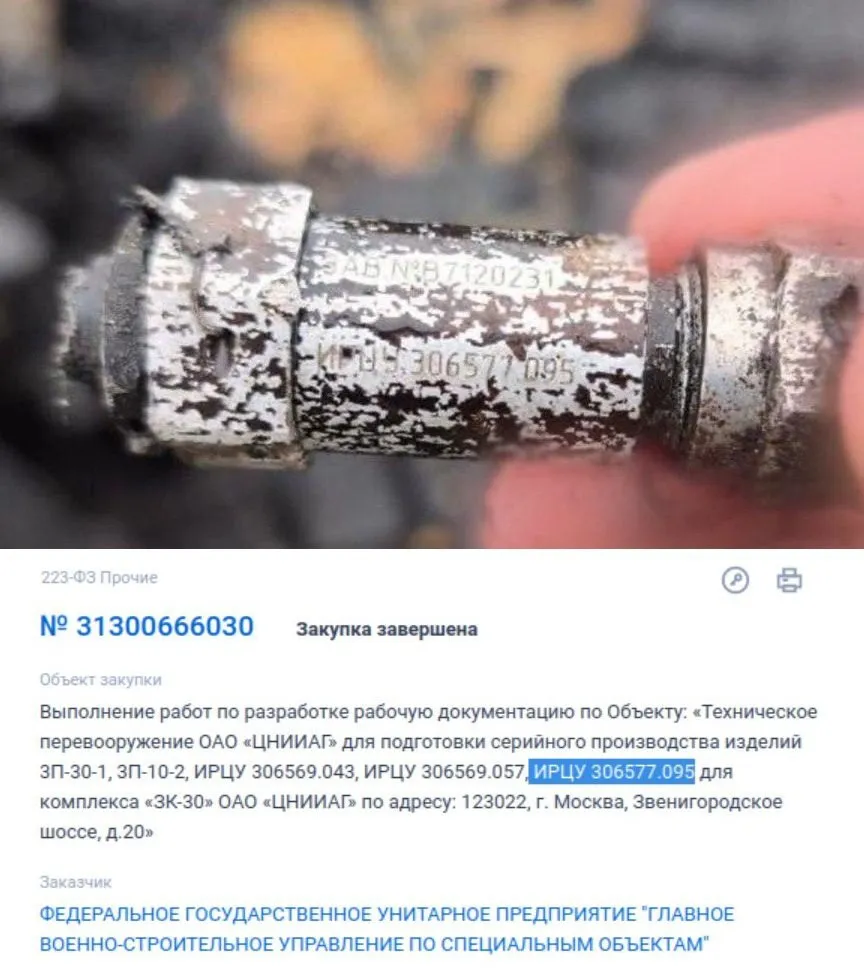War in Ukraine
Not the technology Putin was talking about: the found part of the "newest" Oreshnik missile revealed an inconvenient truth for the Kremlin. Photo
On Thursday, November 21, Russia fired various types of missiles at the Dnipro River, including the first use of the Oreshnik intercontinental missile, which dictator Vladimir Putin called "the latest weapon." However, the wreckage of the Oreshnik was found at the site of the arrival, including a part from another missile, the Bulava.
Given that the Bulava has been under development since the 1990s, the claims of "novelty" of the Oreshnik seem to be an exaggeration. This was written by the Russian edition of "Agency."
The outlet noted that a part made for the Bulava missile was found at the crash site of the Oreshnik missile, which Putin called "the latest development." Development of the Bulava began in the 1990s, and production began in the late 2000s.
"This may indicate that the missile used by the Russian army on Thursday may not use such new technologies as the Russian president said in his video address," the Agency notes.
Photos of the wreckage were published by CNN. And Radio Liberty journalist Mark Krutov discovered a 2013 contract for the development of working documentation for the preparation of serial production of spare parts for the ZK-30 complex or the R-30 Bulava intercontinental ballistic missile.
The part mentioned in the procurement documents is being manufactured on a Swiss high-precision drilling and milling machine Fehlmann Picomax 54.
"The Bulava missile is not the newest in the Russian arsenal. Its development began back in the 1990s, it was tested in 2005, mass production began in 2007, and it was adopted in 2012. The use of parts from the Bulava in Russia's "newest" missile may cast doubt on whether it uses truly new technologies, Krutov said," the Agency writes.
Putin himself said on the day of the attack on Dnipro that Russia used "one of its newest Russian medium-range missile systems with a ballistic missile in a non-nuclear hypersonic Oreshnik" to strike the industrial complex in Dnipro. The dictator added that the speed of ballistic missiles ranges from 4 km/s to 7.8 km/s and that there are allegedly no means of countering another Russian "analogues" in the world.
Putin called the use of an intercontinental ballistic missile by a Ukrainian city "a response to the strikes by American and British weapons on Russian territory."
As a reminder, on November 21, Russia launched missiles from Tu-95MS and an intercontinental ballistic missile down the Dnipro River at Ukraine. The combined massive attack on the city's enterprises and critical infrastructure lasted from 5 to 7 am.
According to the Air Force of the Armed Forces of Ukraine, Russian troops launched an intercontinental ballistic missile from Astrakhan region of the Russian Federation, an X-47M2 Kinzhal aeroballistic missile from a MiG-31K fighter jet in Tambov region, and seven X-101 cruise missiles from Tu-95MS strategic bombers (launch area – Volgograd region).
"As a result of the anti-aircraft combat, the units of the Air Force anti-aircraft missile forces destroyed six X-101 missiles. Other missiles were destroyed without significant consequences," the Air Force said.
Only verified information is available on our Telegram channel OBOZ.UA and Viber. Do not fall for fakes!




























